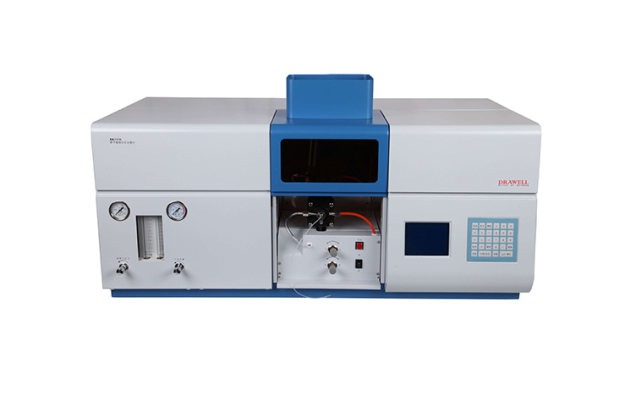
Форум города Днепр

|
|||||||
| Онлайн уроки Уроки Photoshop, Javascript, Flash и т.д. |
 |
|
|
Опции темы | Опции просмотра |
|
|
#1 |
|
Новичок
|
Atomic absorption spectrophotometry (AAS) is an analytical technique used to determine the elemental composition of materials. When light passes through a sample, some of the light is absorbed by the atoms in the sample. By measuring how much light is absorbed at specific wavelengths, the concentration of particular elements in the sample can be determined.
But what exactly can an analyze? Let's take a closer look at how this versatile instrument works and what kinds of elements it can detect. Principles of Atomic Absorption Spectrophotometry At the heart of an AAS is a light source, a sample compartment, a monochromator, and a detector. The light source generates light beams with wavelengths that are specifically absorbed by the target analyte elements in the sample. This light passes through the sample, and the monochromator isolates the absorbance wavelengths of interest before the transmitted light reaches the detector.  When atoms of the target elements are present in the sample, they absorb some of the light beam's energy as it passes through. The greater the concentration of the analyte atoms, the more light will be absorbed. By measuring the reduction in light intensity reaching the detector, the AAS can quantify how much of an element is present in the sample. To isolate the absorbance wavelengths of a particular element, most AAS instruments utilize special hollow cathode lamps. These lamps emit light from excited atoms of the target element, providing element-specific wavelengths to probe the sample. The AAS can also use continuum light sources and apply spectral filtering to isolate the desired wavelengths. Analyte Elements for Atomic Absorption One of the major benefits of AAS is its ability to analyze over 70 different elements across the periodic table. This includes: Alkali and alkaline earth metals such as Li, Na, K, Ca Transition metals like Cr, Mn, Fe, Co, Ni, Cu, Zn Heavy metals including Pb, Cd, Hg Metalloids such as As, Se, Sb Precious metals like Au, Ag, Pt Certain elements can be probed more sensitively than others based on their atomic absorption properties. But in general, AAS can handle element analysis from percentages down to trace concentrations of a few parts per million (ppm) or parts per billion (ppb). Compared to other trace element analysis techniques like ICP-MS, AAS offers some unique advantages: Simple and cost-effective instrumentation High sensitivity for certain elements like Cu, Zn, Ni, Pb Minimal sample pretreatment needed Direct solid sample analysis possible in some cases This makes AAS accessible for elemental analysis across diverse industries and applications. Applying Atomic Absorption Spectrophotometry Atomic absorption spectrophotometer has become an indispensable analytical tool for determining elemental compositions in fields like: Chemistry - Analyzing metals in pharmaceuticals, alloy compositions, contaminants in reagents Food and Agriculture - Measuring Na, K, Ca, Mg, Fe, Zn in crops; detecting toxic metals like Pb, Hg, As, Cd Environmental - Monitoring heavy metal pollutants in soil, air, water samples Forensics - Detecting traces of poisons, bullets, fingerprints Geology - Assaying precious metals in ores, minerals; lithium exploration Metallurgy - Alloy quality control, corrosion studies, metal plating analysis Routine elemental analysis with AAS provides vital data for product quality control, environmental protection, and bridging gaps in scientific understanding across domains. Advancing Atomic Absorption Spectrophotometry While AAS has been widely used since the 1950s, new techniques and technologies are further expanding its analytical possibilities. For example: Graphite Furnace AAS - Using graphite tubes for sample heating improves sensitivity and minimizes interference. Hydride Generation - Converts analytes into volatile hydrides to improve detection of elements like As, Se, Sb. Cold Vapor Technique - Specialized for trace analysis of mercury down to ng/L levels. High-Resolution Continuum Source AAS - Offers higher precision, faster measurements. With advanced instruments available from leading manufacturers like Drawell Analytical, laboratories can harness the full potential of AAS for elemental analysis today and in the future. Whether your application involves trace metals in food, heavy metal contaminants, alloy compositions, or any other elemental analysis need, atomic absorption spectrophotometer offers an acc  te, sensitive, and cost-effective solution. te, sensitive, and cost-effective solution.
|
|
|

|
 |
| Здесь присутствуют: 1 (пользователей: 0 , гостей: 1) | |
|
|